’Greenland Migrating’ at Denmark's Venice Biennale Exhibition
By Bustler Editors|
Thursday, Aug 30, 2012
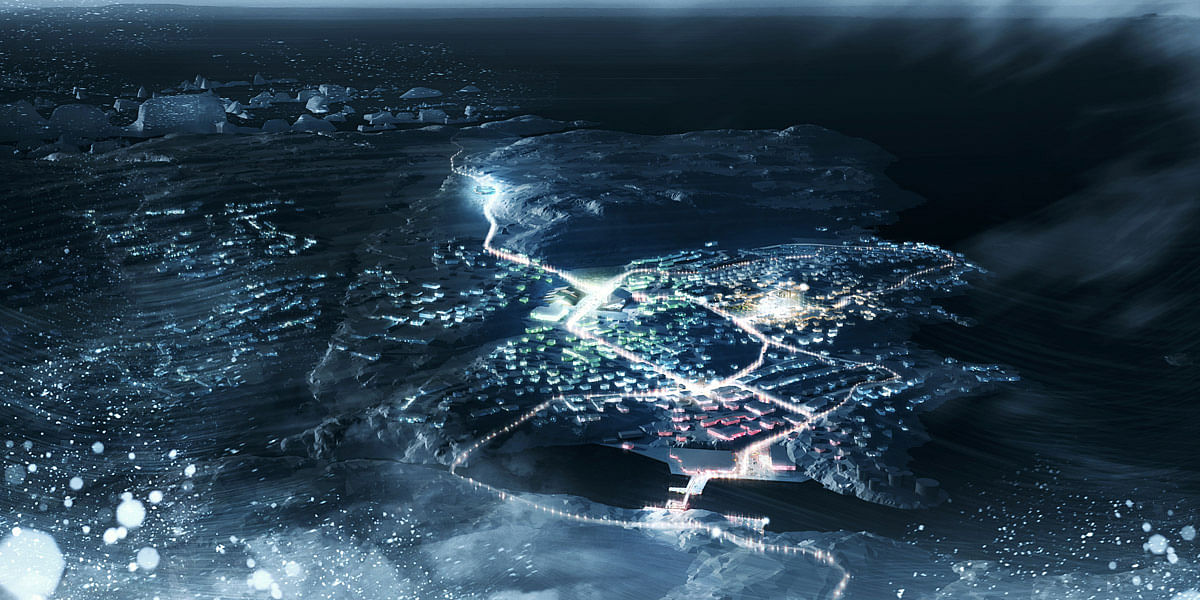
Related
Last week, Bustler presented the project Connecting Greenland: AIR+PORT, designed by BIG, TENU, Julie Hardenberg and Inuk Silas Høgh, as part of the exhibition Possible Greenland in the Danish pavilion at the 13th International Architecture Exhibition in Venice, Italy. Today's featured project from Possible Greenland is Greenland Migrating, developed in a collaboration between Henning Larsen Architects, David Garcia Studio and KITAA Architects.
The exhibition opened yesterday and will run until November 25, 2012.
Head curator of Possible Greenland, the internationally renowned Danish-Greenlandic Professor in geology, Minik Rosing, and co-curator NORD Architects Copenhagen, have worked together with six teams of architects, engineers, planners and ethnologists from Denmark and Greenland. They have developed a number of scenarios that will contribute to a broader debate in Greenland and also be an invitation to the rest of the world to contribute to a sustainable development of the country.
Project Description from the Architects:
‘Greenland Migrating’
"We will work for a quick takeover of immigration responsibility and immigration legislation. We wish to do this as we expect a large labour shortage (...) For this reason, we should welcome foreigners who wish to work in our country."
Former Prime Minister of Greenland Hans Enoksen to Politiken.dk, 7 January 2009.
"The Greenlandic Philosophy of Life is based on the appreciation of the "interconnectedness of all things" - be it humans' inseparable physical and spiritual connection with each other, with nature, the natural resources or the universe – a connectedness that reaches far beyond the individual person. Our country is an open society which appreciates diversity. We will create enabling conditions so that people have the opportunity to be integrated into the Greenland society.“
The Coalition Agreement 2009‐2013 between the three coalition parties of the Greenlandic Government.

Project Statement
Open Greenland - A Guiding Concept
Given Greenland's history of constant immigration throughout the ages and its present and past internal migration patterns – contrasted by the size of the island – it appears that welcoming the 'visitor' has been a constant throughout its history. Partly a necessity, and partly a cultural heritage, this social relationship to 'the other' has allowed Greenland to survive, thrive and to project an everlasting memory to its visitors. 'Openness' does not only reflect the character of its people, but also the nature of the landscape. Albeit cold and inhospitable, it is also enticing and has attracted curious and adventurous explorers for centuries.
We propose an inviting approach to migration, to embrace its potential, to capitalise on contact with the global social landscape and become inclusive instead of exclusive. Today's small Greenlandic population, in the words of many inhabitants and politicians, needs workforce and brainpower to deal with the challenges and make use of the possibilities that lie ahead. With a policy of 'openness', internally and externally, for short-staying visitors to permanent immigrants, we propose a strategy that enhances Greenland's potential on the road to a challenging future.
With Ilulissat as a case scenario, we reflect on an event from the last century. In 1973, the small settlement of Qullissat was closed down due to the demise of its mining industry. Its population migrated to Ilulissat and took an important part of the community with them: their meeting space, their church. Today, the church stands as a symbol of how meeting spaces are of vital importance to a community.
Movement and migration have been and are an intrinsic aspect of Greenlandic culture.

A manifesto
We propose an alternative masterplan, based on people as a resource, regardless of race and ethnicity. The people who already live in Greenland and the people who will come to the country. Capitalising on density and the migrating community, whether it is for a day, a season or a lifetime, this strategy aims to promote the 'meeting' between people as a resource for growth and economic sustainability. We suggest four interventions where architecture can be the catalyst for the 'meeting' and a more cohesive Ilulissat. It is the present and future Greenlanders, where ever they may come from, who will eventually form the Ilulissat of tomorrow.
Culture Centre
Tourism is a vital economic life line to Ilulissat. From the one-day cruise ship tourists during the summer to longer visits by tourists wishing to enjoy the spectacular scenery, tourism also has a large influence on the town's resources and infrastructure.
One of the largest challenges is to establish a considerate meeting between the local culture and the visitor. Next to the existing school, in the centre of Ilulissat, we propose to establish a multi-purpose Culture Centre where citizens can meet for local events. As part of this strategy, the nursing home is integrated in the building. In addition, the cultural scene is expanded with new exhibition spaces and a main library.
Our hope is for the Cultural Centre to become the point of rotation in the town centre, attracting locals as well as visitors, the young and the elderly – a place where local culture can be shared across generations and continents.
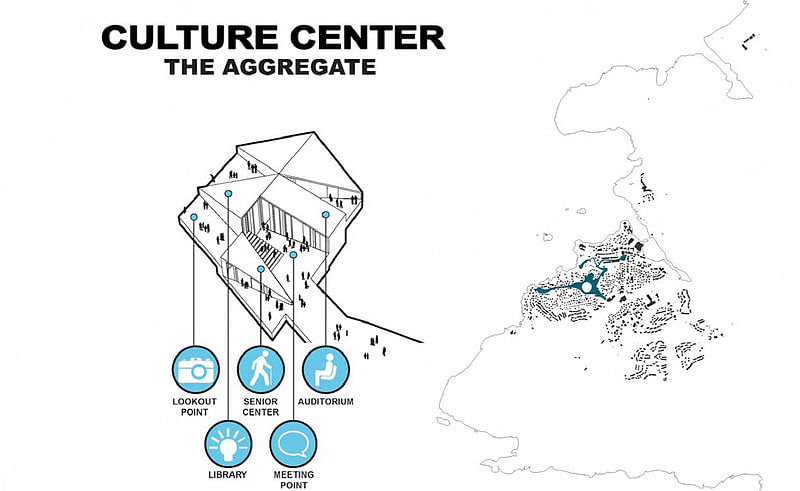
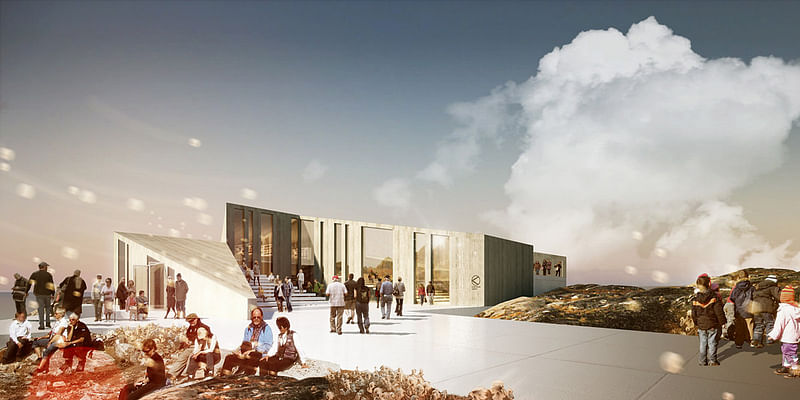

Inhabiting the harbour
Lack of housing is almost endemic in Greenland. Waiting lists for housing in Ilulissat alone is in the order of five years. If considering the future work migration and the town's wish to grow and attract young people, temporary housing is crucial for the area.
Until now, the harbour has been an area closely connected to the sea, and fishing was the traditional connection to the rest of the world. We propose to establish a market for locals and visitors next to the fishing harbour. Adding to this, we suggest temporary housing for workers and students to be integrated in the market plaza, along the harbour edge – an undeveloped area full of potential. Locals, tourists, students and workers from abroad could enliven this otherwise forgotten area close to the centre of Ilulissat.
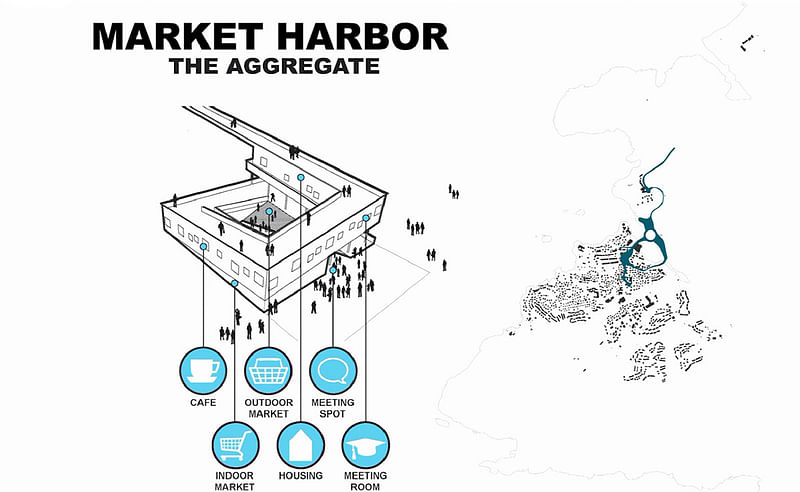

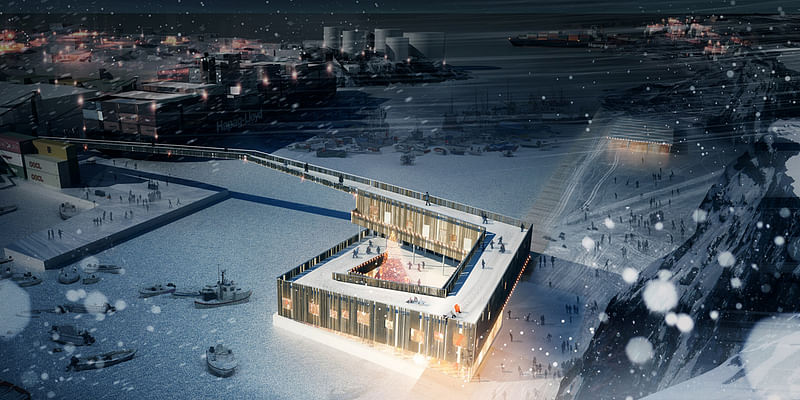
Glacial Hub
Student migration in Greenland is a serious national concern. Often, young students go abroad to pursue their studies and do not come back. This is largely due to lack of higher education programmes in Greenland that can compete with international curriculums.
On the way to the Ilulissat Ice Fjord, a UNESCO world heritage site visited by tourists and locals alike, we propose to establish a new meeting hub. Aiming to enhance the encounter between students, locals and tourists, the Glacial Hub will offer a new UNESCO office, a tourist information centre and spaces for the new Faculty of Glacial Studies.
The purpose is to attract students from Greenland and abroad to a unique study programme, only offered in Ilulissat. In this way, the new hub aims to enhance the cultural and educational possibilities in town, using the Ice Fjord as the main attractor.
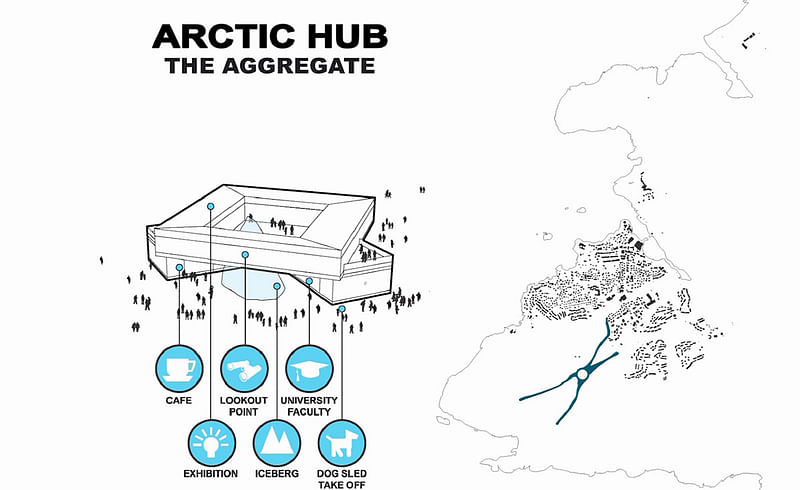
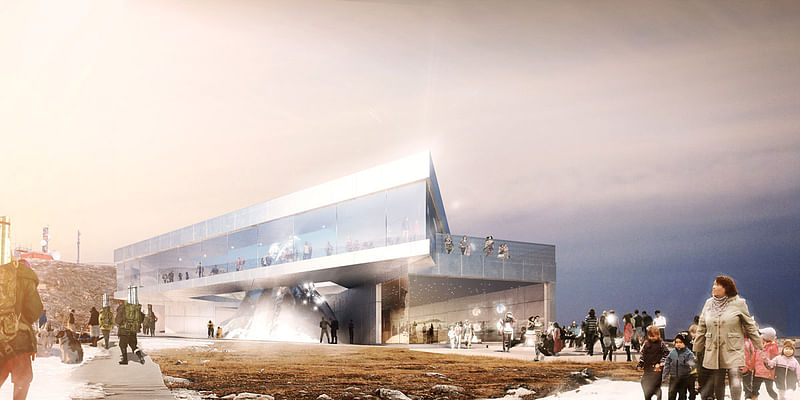
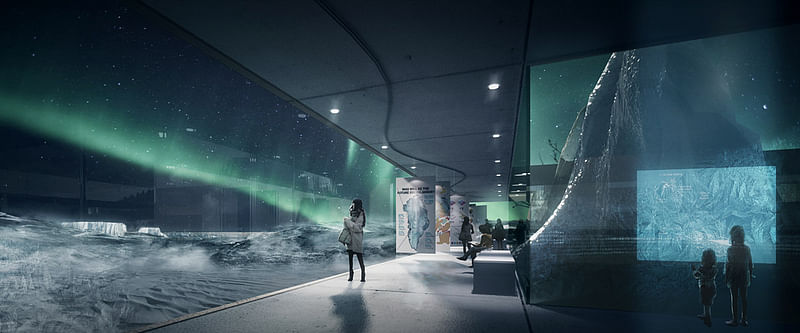
Sports Plaza
Hunting, dog sledding, fishing and sports in general are everyday activities in Ilulissat. All generations engage with nature and sports, albeit the harsh climatic conditions in winter. However, the infrastructure and facilities cannot meet the needs of the population and often youngsters have to stay up late, awaiting their turn to use the overcrowded indoor facilities.
At the heart of the town, the outdoor football field and the sports hall share one of the main streets in Ilulissat as arrival road. Capitalising on the long tradition of sports and outdoor activities in the local community, we propose to develop a sports plaza in this location. A flexible cover will protect the football field from the elements in winter, allowing for sports activities to take place all year round.
The street will become an arena for sports events, from the annual sled dog race in winter to football competitions during summer. The aim is to create a street of activity running through the entire town of Ilulissat – with a focus on sports and fitness.





Share
0 Comments
Comment as :